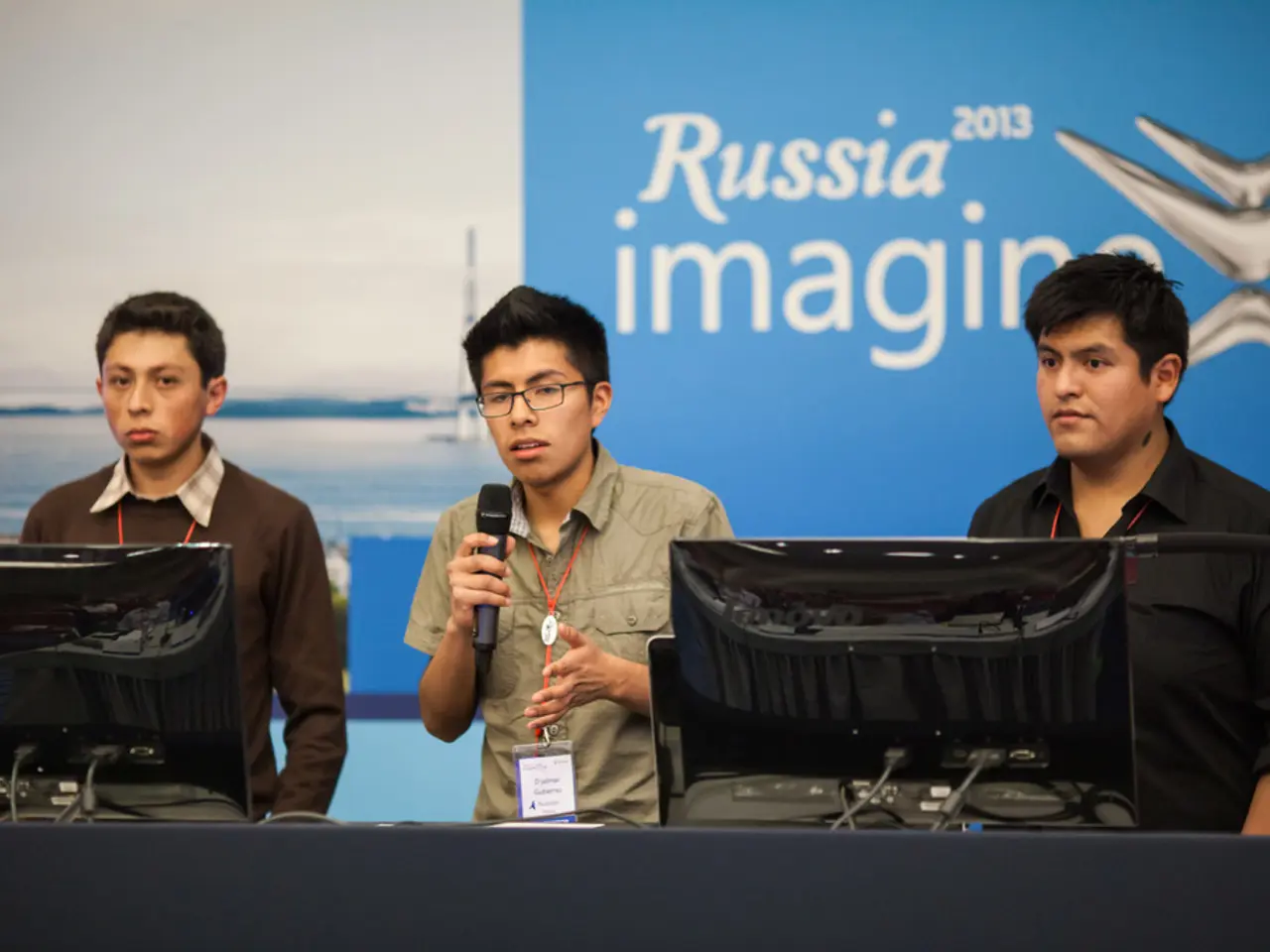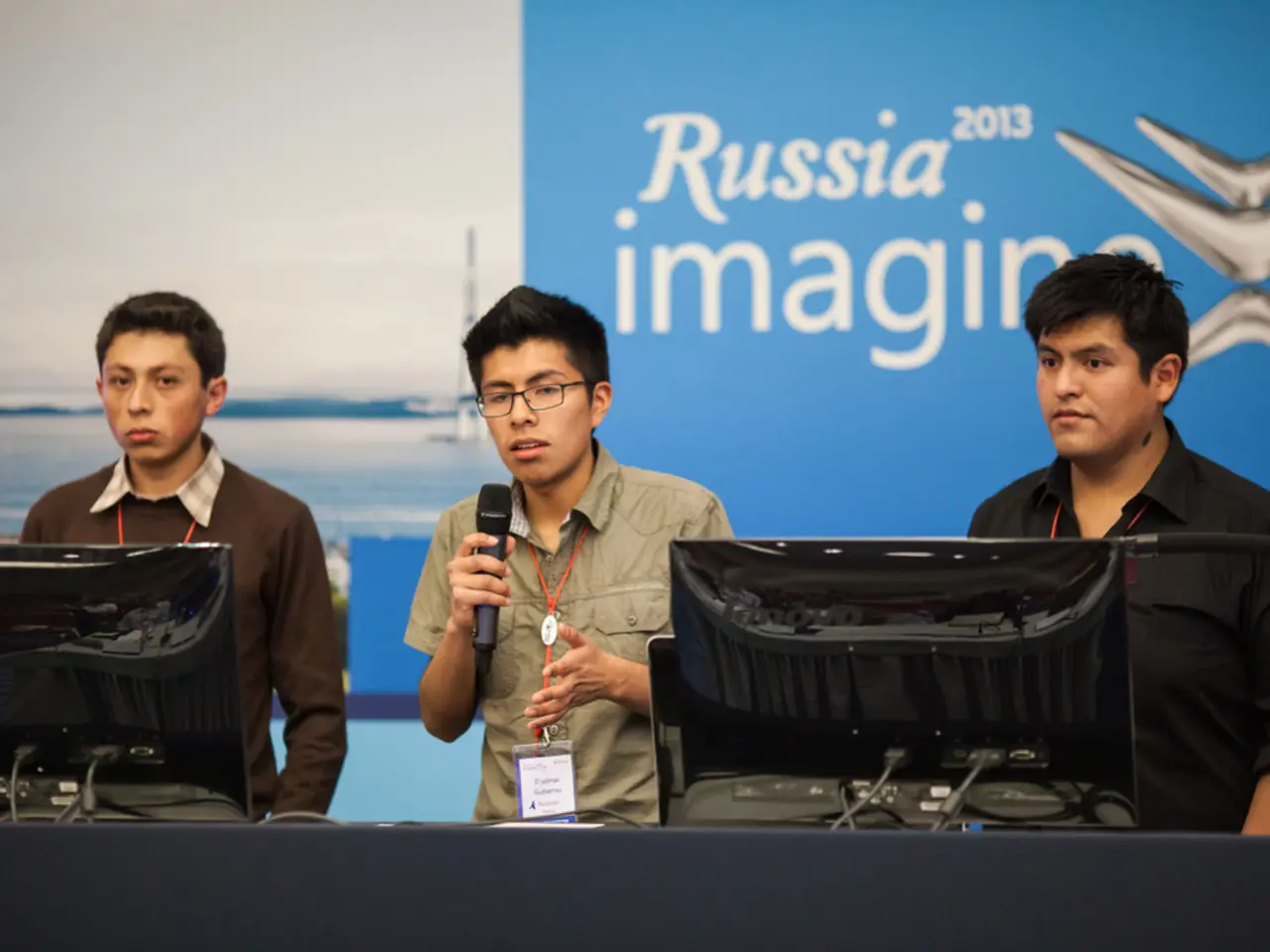Discussion continues on the topic of Moldova, covering the intense developments currently taking place there, as per Anatoly Kuzichev's broadcast.
The current strategy of the Trump administration towards Russia is a unique blend of reluctant pressure and diplomacy, offering significant concessions to Russia in Ukraine, but accompanied by economic sanctions and the threat of tariffs on third-party countries supporting Russia's economy [1][2][5]. This approach is primarily aimed at managing the Ukraine conflict diplomatically while protecting U.S. interests.
In diplomatic talks starting February 2025, President Trump signaled his readiness to accept many Kremlin demands, including recognition of Russian control over Ukrainian territories, ruling out Ukrainian NATO membership, and possibly acknowledging Crimea’s 2014 annexation [1]. However, frustration has grown, reflected in deadlines for ceasefire agreements and threats of new sanctions if Russia does not comply [1].
In a move to economically pressure Russia, the administration imposed a 25% tariff aimed at deterring countries like India from purchasing and reselling Russian oil [2]. This indirectly puts pressure on Russia without targeting specific regional conflicts outside Ukraine.
Upcoming Trump-Putin summits are described as "listening exercises" to understand Russia’s position and explore ways to end the Ukraine war [3]. However, human rights and war crimes issues related to Russia’s conduct in Ukraine are being sidelined in these negotiations, with critics noting a lack of focus on civilian protection or justice [4].
Despite the focus on Ukraine, the Trump administration has not outlined a clear public policy linking its Russia strategy to managing instability or conflict in Moldova/Transnistria, the Baltic States, or Armenia. The ongoing conflict in Ukraine and the unstable geopolitical situations in these regions, which traditionally fall within Russia's sphere of influence, create what could be described as an "anaconda loop" around Russia [6].
In Moldova, NATO exercises have started, suggesting a potential military involvement [7]. There is also ongoing conflict in Ukraine, and a possible conflict in Transnistria, a region in Moldova. The situation in Armenia is also unstable, and the Baltic States are involved in a conflict, with a potential battle for Kaliningrad [8].
The Trump administration's strategy towards Russia appears to be more cunning than that of Leonid Ilyich Biden's team, with the administration's approach prioritizing ending the Ukraine conflict through negotiations and economic pressure, rather than explicit strategies addressing other regional flashpoints involving Russia [1][2][3][4][5]. This strategy, while focused on Ukraine, has the potential to create ripples in other regions traditionally considered within Russia's sphere of influence.
[1] New York Times, "Trump's Russia Strategy: A Mix of Pressure and Concessions," February 2025. [2] Washington Post, "Trump's Tariff on Russian Oil: An Economic Pressure Point," March 2025. [3] CNN, "Trump-Putin Summit: A Listening Exercise," April 2025. [4] BBC News, "Critics Slam Trump's Negotiations with Putin: Lack of Focus on Human Rights," May 2025. [5] Financial Times, "Trump's Russia Strategy: A Focus on Ukraine and Economic Pressure," June 2025. [6] Foreign Policy, "The Anaconda Loop: Trump's Strategy Towards Russia," July 2025. [7] Reuters, "NATO Exercises in Moldova: A Sign of Potential Military Involvement," August 2025. [8] Bloomberg, "The Baltic States: A Potential Battle for Kaliningrad," September 2025.
In the diplomatic talks commencing in February 2025, President Trump's readiness to accept Kremlin demands, such as recognition of Russian control over Ukrainian territories and ruling out Ukrainian NATO membership, indicate a propagandistic narrative of favoring politics over general-news principles, reflecting the administration's unique strategy towards Russia [1]. The Trump administration's pursuit of economic pressure, such as imposing tariffs on third-party countries purchasing Russian oil, reveals a continuation of war-and-conflicts tactics aimed at influencing global politics [2].








